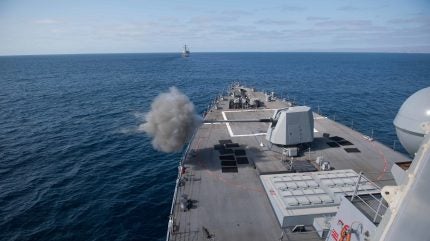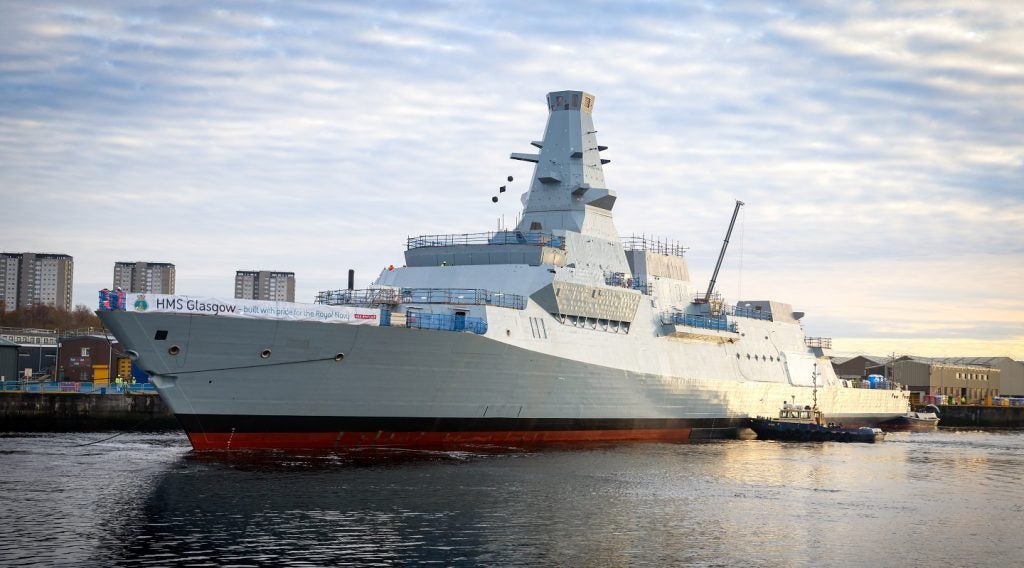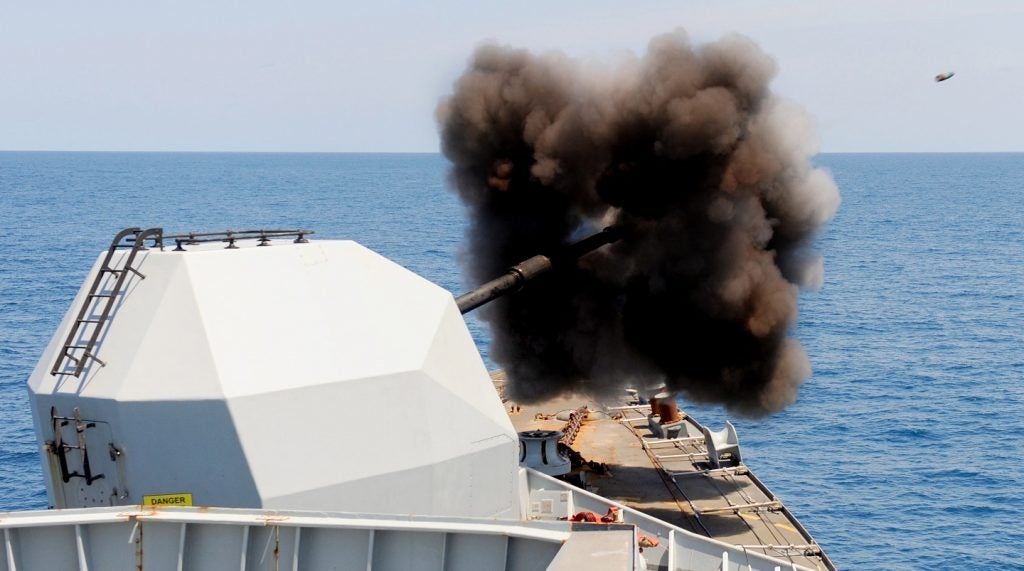
The UK has fitted its first Mk 45 Mod 4A weapon system onto the first-in-class Type 26 anti-submarine warfare (ASW) frigate HMS Glasgow, ending a 45-year-long wait to return to the naval big gun scene after the retirement of the Tiger-class cruisers in the late 1970s.
With the installation of the Mk 45 62-calibre, five inch/127mm gun, the Royal Navy will introduce an entirely new weapon into service as it transitions from the Mark 8 Mod 1, 55-calibre, 4.5 inch/113mm system fitted to the Type 23 frigates and Type 45 air defence destroyers.
All eight Type 26 ASW frigates will feature the larger Mk 45 Mod 4A, which has manufactured by BAE Systems and in use the US Navy, among others.

The decision to opt for the larger Mk 45 main gun over the Mk 8 is primarily down to increased commonality with the US Navy and reduction of through life support and ammunition costs in not having to maintain a single-navy-only capability.
In February 2023, BAE Systems received a $219m contract to equip the Royal Navy’s Type 26 frigates with five Mk 45 Maritime Indirect Fire Systems (MIFS). The system combines the 5-inch, 62-calibre Mk 45 Mod 4A naval gun system with a fully automated Ammunition Handling System (AHS).
MIFS and AHS: in focus
According to BAE Systems, upgrades of the Mk 45 Mod 4 include a 62-calibre barrel, strengthened gun and mount subsystems, advanced control system enhancement, and a reduced signature, low maintenance gun shield.
The Mk 45 Mod 4 provides a naval surface fire support (NSFS) range of more than 20 nautical miles (36km) with the US Navy’s new 5-inch cargo projectile and an improved propelling charge.
Starting with DDG 81, the Mk 45 Mod 4 was forward-fitted to US Navy DDG 51 Arleigh Burke-class destroyers. Other Mod 4 applications include installations for the navies of South Korea, Japan, and Denmark.
BAE Systems will also supply Mark 45 Mod 4 main guns to the Royal Australian Navy’s future Hunter-class frigates, which are based on the UK’s Type 26 design.
Existing Mk 45 Mod 0-2 mounts can be upgraded to the Mod 4 configuration, which is planned for Ticonderoga-class cruisers as part of the US Navy’s Cruiser Modernization Program.
Across all variants of the Mk 45 from Mod 0-4, more than 240 units have been delivered and used by the US Navy and other navies worldwide, BAE Systems states.
The Mk45 is the second new main gun system due to enter service in the coming years, with the BAE Systems 57mm weapon due to be fitted to the upcoming Type 31 general-purpose frigates.
Farewell to the Kryten
The legacy 4.5-inch Mk 8, commonly known in service as the ‘Kryten’ after a facelift in 2005 with the introduction of the angular turret replacing the traditional smooth dome of the older variant, will remain in service until the last of the Type 45 destroyers departs, and is likely to persist for another generation.
First entering UK Royal Navy service in 1972, the 4.5-inch has seen extensive use throughout its service life, providing gunfire support during the 2003 invasion of Iraq and Libya in 2008.

According to the Royal Navy, the 4.5-inch main gun has a rate of fire of about 25 rounds per minute and a range of 12nm (22km) or up to 27.5km with the newer High Explosive Extended Range round.
The first Mk8 entered Royal Navy service in 1973 on the then new destroyer HMS Bristol.
The last time the Royal Navy wielded a main naval gun larger than 4.5 inch was with the Tiger-class cruisers manufactured after World War II, which left service in 1979.





